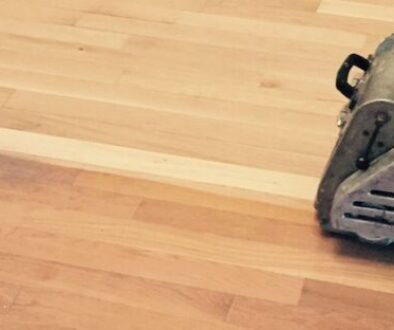Hardwood Floor Sanding
Hardwood Floor Sanding
Hardwood floor sanding is a process used to restore or refinish hardwood floors that have become worn, scratched, or damaged over time. Sanding the hardwood floor involves using a sander to remove the top layer of wood, which can eliminate imperfections and reveal a fresh surface. It’s a crucial step in the refinishing process and requires some skill and care to achieve the best results.
Here’s an overview of the steps involved in hardwood floor sanding:
-
Clear the area: Remove all furniture, rugs, and any obstacles from the room to ensure a clear working space.
-
Inspect and prepare the floor: Check for any protruding nails or staples on the surface. Fix or remove them as necessary. Also, fill any large gaps or cracks with wood filler or putty and let it dry completely.
-
Choose the right equipment: Select the appropriate floor sander for the job. There are different types of sanders available, including drum sanders, orbital sanders, and edge sanders. For larger areas, a drum sander is commonly used, while an orbital sander is ideal for smaller spaces and refinishing jobs.
-
Sanding process:
- Start with a coarse grit sandpaper (e.g., 36 or 40 grit) to remove the old finish, stains, and scratches. Always sand in the direction of the wood grain to avoid damaging the floor.
- Gradually move to finer grit sandpapers (e.g., 60, 80, and 100 grit) for a smoother finish. Repeat the sanding process with each grit until the floor’s surface is even and blemish-free.
-
Sanding edges and corners: Use an edge sander to reach areas that the drum or orbital sander cannot access, such as edges and corners.
-
Hand sanding: For intricate spots and hard-to-reach areas, you may need to do some hand sanding with sandpaper.
-
Clean the dust: After sanding, thoroughly clean the floor to remove all the dust and debris. A vacuum cleaner and a tack cloth are useful for this purpose.
-
Optional: Stain (if desired): If you want to change the color of the floor, you can apply a wood stain at this point. Follow the manufacturer’s instructions for application and drying time.
-
Apply a finish: After sanding and optionally staining, apply a protective finish to the hardwood floor. Common options include polyurethane, varnish, or wax. Apply multiple coats, allowing each coat to dry before applying the next.
-
Allow proper drying time: Make sure to give the finish enough time to dry and cure before placing furniture or walking on the floor.
It’s essential to take your time and be patient during the sanding process to achieve a beautiful and long-lasting result.



